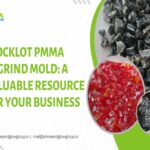- Introduction
- Factors Affecting PVC Pipe Scrap Economy
- Sources of PVC Pipe Scrap
- Techniques for Collecting and Sorting PVC Pipe Scrap
- Process of Recycling PVC Pipe Scrap
- Uses of Recycled PVC Pipe Scrap
- Market Rates of PVC Pipe Scrap
- Selling PVC Pipe Scrap
- Benefits of Recycling PVC Pipe Scrap
- Challenges and Limitations
- Conclusion
- Frequently Asked Questions
Introduction
In today’s blog post, we will delve into the PVC pipe scrap economy, exploring its significance and the factors influencing market rates. Understanding these dynamics is crucial for individuals and businesses involved in the recycling and reuse of PVC pipe scrap. So, let’s start by defining PVC pipe scrap and highlighting the importance of comprehending market rates.
Definition of PVC Pipe Scrap
PVC pipe scrap refers to discarded or unused PVC (polyvinyl chloride) pipes that can be recycled or repurposed. These pipes are commonly used in various industries for plumbing, construction, and electrical conduit systems.
Importance of Understanding Market Rates
Being aware of the current market rates for PVC pipe scrap is essential for several reasons. Firstly, it allows recyclers and manufacturers to make informed decisions regarding the purchase and sale of PVC pipe scrap. Additionally, it helps in estimating the profitability of recycling ventures and assessing the overall economic viability of the industry.


Factors Affecting PVC Pipe Scrap Economy
| Factor | Description |
|---|---|
| Crude oil prices | PVC is derived from petroleum, and fluctuations in crude oil prices can directly impact the cost of manufacturing new PVC pipes, thereby influencing the demand for recycled PVC pipe scrap. |
| Demand for PVC pipes | The construction and infrastructure sectors play a significant role in driving the demand for PVC pipes. Any changes in these industries can have an impact on the availability and market rates of PVC pipe scrap. |
| Recycling rates | The efficiency and capacity of recycling facilities affect the supply of recycled PVC pipe scrap. Higher recycling rates can lead to increased availability and potentially lower market rates. |
| Government regulations and policies | Environmental regulations and policies can influence the recycling practices and market dynamics of PVC pipe scrap. Government initiatives promoting sustainability and circular economy practices can drive the demand for recycled PVC. |
Sources of PVC Pipe Scrap
PVC pipe scrap can be sourced from various locations, including: you can buy from Shine and glow Group
| Source | Description |
|---|---|
| Construction sites | Remnants and excess PVC pipes from construction projects. |
| Demolition sites | PVC pipes salvaged during demolition activities. |
| Municipal solid waste | Discarded PVC pipes from residential and commercial waste streams. |
| Industrial waste | PVC pipes discarded as a byproduct of industrial processes. |
Techniques for Collecting and Sorting PVC Pipe Scrap
To ensure efficient recycling, PVC pipe scrap needs to be collected and sorted appropriately. Here are some common techniques used for this purpose:
| Technique | Description |
|---|---|
| Manual sorting | Skilled workers manually segregate PVC pipe scrap based on size, quality, and other relevant criteria. |
| Mechanized sorting | Automated machinery separates PVC pipe scrap based on specific parameters, improving the speed and accuracy of the sorting process. |
| Magnetic separation | Magnetic fields are utilized to separate ferrous materials from PVC pipe scrap. |
| Density-based separation | Techniques like air classification and water-based separation are employed to sort PVC pipe scrap based on density differences. |
Process of Recycling PVC Pipe Scrap
The recycling process for PVC pipe scrap typically involves the following steps:
| NO | Step | Description |
|---|---|---|
| 1 | Grinding and shredding | PVC pipe scrap is crushed into small pieces or shredded to facilitate further processing. |
| 2 | Chemical treatment | The shredded PVC is subjected to chemical treatments to remove impurities and improve the quality of the recycled material. |
| 3 | Extrusion | The chemically treated PVC is melted and extruded into pellets or other desired forms for reuse. |
| 4 | Quality control | The recycled PVC undergoes rigorous testing to ensure it meets quality standards for various applications. |
Uses of Recycled PVC Pipe Scrap
Recycled PVC pipe scrap finds application in several sectors, including:
| Application | Description |
|---|---|
| Manufacturing of new PVC pipes | Recycled PVC can be used as a raw material in the production of new PVC pipes. This can reduce the reliance on virgin materials, conserve natural resources, and reduce pollution. |
| Construction materials | Recycled PVC can be incorporated into various construction materials like profiles, sheets, and panels. This can improve the sustainability of construction projects and reduce the environmental impact of the construction industry. |
| Electrical conduits | PVC pipe scrap can be transformed into electrical conduits. This can provide an eco-friendly alternative for wiring installations and help to protect electrical wiring from damage and reduce the risk of fires. |
| Signage and banners | Recycled PVC can be utilized for creating durable signage and banners. This can reduce the environmental impact of the advertising industry and promote sustainability. |
Market Rates of PVC Pipe Scrap
The market rates of PVC pipe scrap can vary based on several factors:
| Factor | Description |
|---|---|
| National and global rates | Local market dynamics, supply-demand imbalances, and global trade influences can impact the market rates of PVC pipe scrap. |
| Factors affecting market rates | Factors like crude oil prices, demand fluctuations, recycling rates, and government policies all play a role in determining market rates. |
| Seasonal fluctuations | Market rates may experience seasonal fluctuations due to variations in construction and infrastructure activities. |
| Future market trends and predictions | Anticipated changes in the industry, technological advancements, and emerging market trends can also influence PVC pipe scrap rates. |
Selling PVC Pipe Scrap
If you have PVC pipe scrap to sell, you have several options:
| Factor | Description |
|---|---|
| National and global rates | Local market dynamics, supply-demand imbalances, and global trade influences can impact the market rates of PVC pipe scrap. |
| Factors affecting market rates | Factors like crude oil prices, demand fluctuations, recycling rates, and government policies all play a role in determining market rates. |
| Seasonal fluctuations | Market rates may experience seasonal fluctuations due to variations in construction and infrastructure activities. |
| Future market trends and predictions | Anticipated changes in the industry, technological advancements, and emerging market trends can also influence PVC pipe scrap rates. |
Benefits of Recycling PVC Pipe Scrap
Recycling PVC pipe scrap offers numerous benefits:
| Factor | Description |
|---|---|
| National and global rates | Local market dynamics, supply-demand imbalances, and global trade influences can impact the market rates of PVC pipe scrap. |
| Factors affecting market rates | Crude oil prices, demand fluctuations, recycling rates, and government policies can all affect the market rates. |
| Seasonal fluctuations | Market rates may fluctuate due to variations in construction and infrastructure activities. |
| Future market trends and predictions | Anticipated changes in the industry, technological advancements, and emerging market trends can also influence PVC pipe scrap rates. |
Challenges and Limitations
While PVC pipe scrap recycling offers significant advantages, it also faces challenges and limitations:
| Challenge | Description |
|---|---|
| Contamination of scrap | PVC pipe scrap may be contaminated with other materials, such as metal, rubber, or dirt. This can reduce its recyclability and market value. |
| High transportation costs | The cost of transporting PVC pipe scrap to recycling facilities can be significant, particularly for remote locations. |
| Limited recycling facilities | In some regions, the availability of recycling facilities specifically equipped for PVC pipe scrap may be limited, posing logistical challenges. |
| Lack of awareness among consumers | Limited awareness about the benefits of recycling PVC pipe scrap can hinder the collection and recycling efforts. |
Conclusion
In conclusion, understanding the PVC pipe scrap economy and its market rates is crucial for sustainable recycling practices. By comprehending the factors affecting market rates, sourcing PVC pipe scrap from various locations, employing effective collection and sorting techniques, and exploring the diverse uses of recycled PVC, we can contribute to environmental preservation, enjoy economic benefits, conserve energy, and create employment opportunities. Let’s embrace the opportunities provided by the PVC pipe scrap economy and work towards a greener and more sustainable future.
Frequently Asked Questions
Here are some frequently asked questions regarding PVC pipe scrap:
A1. Common types of PVC waste include PVC pipes, PVC profiles, PVC sheets, PVC foam sheets, and PVC films.
Ans. PVC pipe scrap is recycled through processes such as grinding, shredding, chemical treatment, extrusion, and quality control.
Contaminated PVC pipe scrap may undergo additional sorting, cleaning, and treatment processes to remove impurities before recycling.
Recycled PVC is classified into different grades based on its quality, purity, and intended applications. Common grades include rigid PVC, flexible PVC, and mixed PVC.
Recycling PVC pipe scrap conserves natural resources, reduces energy consumption, minimizes landfill waste, and lowers carbon emissions.
Read also The Future of PVC Scrap: Innovations and Opportunities ; Click to buy
PVC scrap, encompassing pipe scrap, window frame scrap, and foam sheet scrap, poses a significant environmental challenge due to its non-biodegradable nature. The accumulation of PVC waste not only burdens landfills but also threatens ecosystems… Read More



